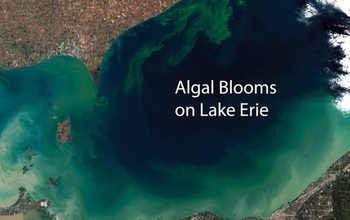All Images
News Release 16-030
Community college teams propose ways to improve natural resource sustainability
NSF, AACC announce finalists for Community College Innovation Challenge
This material is available primarily for archival purposes. Telephone numbers or other contact information may be out of date; please see current contact information at media contacts.

An algal bloom is a rapid increase or accumulation in the population of algae in a water system. This type of bloom threatens ecosystems in bodies of water that many people rely upon for survival. A team of Perimeter College students seeks to address this problem through the development of an autonomous algal skimmer using technology similar to the iRobot Roomba vacuum cleaner.
Credit: Mahetem Moges
Download the high-resolution JPG version of the image. (192.9 KB)
Use your mouse to right-click (Mac users may need to Ctrl-click) the link above and choose the option that will save the file or target to your computer.

The Junk Yard Generator is a project that explores the creation and use of a zero carbon emission
source for energy. This device will not pollute the air and water.
Credit: Brenda Staudenmaier, Alexander Renish, Steven Olson
Download the high-resolution JPG version of the image. (70.3 KB)
Use your mouse to right-click (Mac users may need to Ctrl-click) the link above and choose the option that will save the file or target to your computer.

The Red Rocks Community College IDEA Lab shows its commitment to the race for sustainability
by improving upon the invention of air conditioning. In response to the NSF Innovation
Challenge, the Cooling Tower Blow Down Water Conservation design provides a method to
substantially reduce the amount of water used by large buildings. As the Southwest U.S. faces
long-term drought, the system developed by this dedicated team may ensure sustainable water
usage for generations to come.
Credit: Sean Kelly, Danny Rogers, Matt Armijo, Mike Fisher, Valeria Mokrushova
Download the high-resolution JPG version of the image. (1.1 MB)
Use your mouse to right-click (Mac users may need to Ctrl-click) the link above and choose the option that will save the file or target to your computer.
